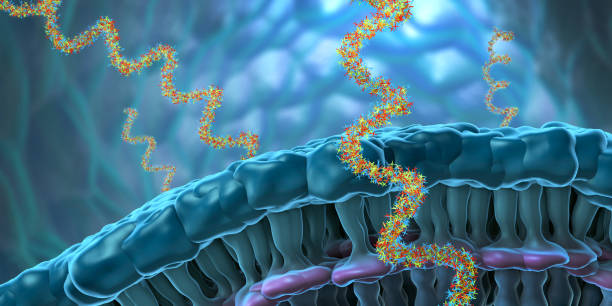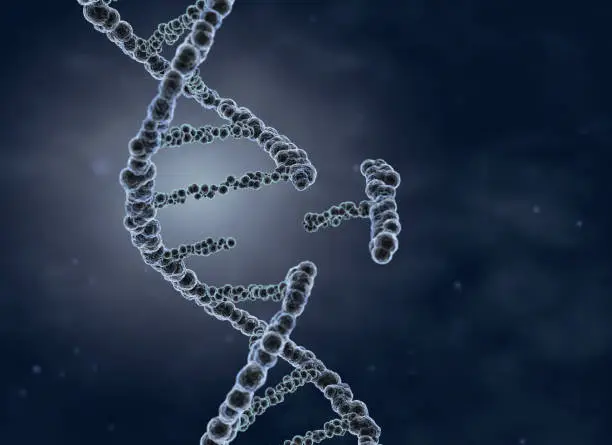Inside the DNA of every cell in your body, over 20,000 genes are arranged on 23 pairs of chromosomes, with one set inherited from each parent. These genes dictate your physical characteristics, such as eye and hair color, and they also produce proteins that regulate vital processes like cell growth and division. Think of these genes as the control center for your body, ensuring everything functions smoothly.
However, sometimes this control system fails. Genes mutate, and while the body often repairs these errors, some mutations lead to serious consequences—most notably, cancer.
Cancer arises from the accumulation of mutations that disrupt normal cellular processes. Among these genetic alterations, the activation of oncogenes plays a pivotal role in transforming a normal cell into a cancerous one. Oncogenes drive cancer by pushing cells to grow uncontrollably, evade cell death, and ultimately form tumors.

What Are Oncogenes?
To understand oncogenes, it’s essential to grasp the concept of proto-oncogenes first. Proto-oncogenes are normal genes that control how cells grow and divide. They produce proteins that help cells respond to growth signals, ensuring that cells only divide when needed. When proto-oncogenes mutate or change, they become oncogenes and drive the uncontrolled cell division that characterizes cancer. Oncogenic activation represents a key step in cancer development.
How Do Oncogenes Get Activated?
Oncogenes become activated through several mechanisms, each leading to the development of cancer. Here are the most common mechanisms:
- Point Mutations: A Tiny Change with a Big Impact
A point mutation occurs when a small change in a gene leads to significant consequences. For instance, a single mutation in the RAS gene can cause it to stay permanently “on,” driving uncontrolled cell growth. Imagine your car’s accelerator being stuck—it would keep speeding up, no matter what you do. That’s what happens when a gene like RAS gets mutated. This is common in cancers such as pancreatic and lung cancer. - Gene Amplification: Too Much of a Good Thing
Gene amplification happens when a cell produces too many copies of a gene, causing an excess of proteins that drive the cell to grow too fast. It’s like having too many cooks in the kitchen, all trying to make the same dish—chaos ensues. This often occurs in certain breast cancers, where the HER2 gene is amplified. - Chromosomal Translocations: DNA Mix-Up
In some cancers, pieces of DNA from different parts of the genome get rearranged, creating a harmful new gene. Imagine two different recipes mixing together to form a dish that wasn’t intended and is harmful. An example is the BCR-ABL gene in chronic myeloid leukemia (CML), which results from a rearrangement between chromosomes 9 and 22. - Insertional Mutagenesis: Viral Interference
Sometimes, viruses insert their DNA into our genes, disrupting normal function and turning proto-oncogenes into oncogenes. It’s like a virus crashing a computer system, causing it to malfunction. This can lead to cancer, such as with certain types of leukemia.

Key Oncogenes and Their Roles in Cancer
Several oncogenes play pivotal roles in various cancers:
- RAS Family: Mutations in these genes drive uncontrolled cell growth in cancers like pancreatic, colorectal, and lung cancer.
- MYC: This gene controls cell growth and death. When it’s overactive, it contributes to cancers like breast and lung cancer.
- BCR-ABL: This oncogene, formed by a chromosomal rearrangement, is a hallmark of chronic myeloid leukemia(CML).
- HER2: Overexpression of this gene drives aggressive growth in some breast and gastric cancers.
- BRAF: Mutations in BRAF are common in melanoma, leading to excessive cell division.
- EGFR: Mutations in this receptor tyrosine kinase drive tumor growth in non-small cell lung cancer (NSCLC).

Oncogenes and Cancer Therapy: A New Hope
The discovery of oncogenes has revolutionized cancer treatment, leading to the development of targeted therapies that specifically block the activity of these cancer-driving genes:
Tyrosine Kinase Inhibitors (TKIs): These drugs block the activity of kinases, proteins often made by oncogenes, to stop cancer growth. Examples;
- Imatinib (Gleevec) targets the BCR-ABL protein in CML, turning a once-deadly disease into a manageable condition.
- Erlotinib(Tarceva) and Gefitinib(Iressa) target the epidermal growth factor receptor(EGFR) and are used in non-small cell lung cancer(NSCLC).
- Sunitinib(Sutent) and Sorafenib(Nexavar) target multiple tyrosine kinases and are used in kidney and liver cancers.
Monoclonal Antibodies: These are designed to target specific proteins in cancer cells. Examples;
- Trastuzumab (Herceptin) targets HER2 in certain breast cancers, helping to stop the growth of cancer cells.
- Rituximab(Rituxan) binds to the CD20 protein on B cells and is used for certain types of lymphoma.
- Cetuximab(Erbitux) binds to the extracellular domain of EGFR and prevents its activation. It is used in the treatment of colorectal cancer and head and neck cancer.
BRAF inhibitors like Vemurafenib(Zelboraf) are used to treat melanoma.
Combination Therapies: Combining oncogene-targeted therapies with other treatment options like immunotherapy can enhance the overall therapeutic effect.
Challenges and Future Directions
While targeted therapies have been successful, challenges remain. Researchers are working on new ways to outsmart cancer:
•Overcoming Resistance: Combating Cancer’s Adaptability
Cancer cells often develop resistance to targeted therapies. Combining treatments, such as pairing trastuzumab with chemotherapy, helps overcome resistance in HER2-positive breast cancer.
•New Targets: Expanding the Arsenal Against Cancer
Scientists continue to identify new oncogenes, expanding the targets for therapy. For example, NTRK gene fusions are targets in various cancers, leading to the development of TRK inhibitors like larotrectinib (Vitrakvi).
•CRISPR-Cas9 Gene Editing: Precision Targeting of Oncogenes
This technology allows for precise modifications of the genome. Researchers are exploring its potential to directly target and edit oncogenes, offering a highly specific treatment that could eradicate cancer at its genetic roots.
Conclusion: Oncogenes as the Engines of Cancer
Oncogenes drive the relentless growth and spread of cancer. Understanding them has led to significant advances in treatment, including targeted therapies that have transformed cancer care. Despite ongoing challenges, progress in research brings us closer to a future where more cancers can be managed or cured. By continuing to explore how oncogenes work and how they can be targeted, we move closer to more effective and personalized cancer treatments.
Further Readings
Croce, C. M. (2008). Oncogenes and Cancer.
Vogelstein, B., & Kinzler, K. W. (2004). Cancer genes and the pathways they control.
Hanahan, D., & Weinberg, R. A. (2000). The Hallmarks of Cancer.
Weinberg, R. A. (2013). The Biology of Cancer. Garland Science.




1 Comment
This is an interesting read. I learnt more from this.